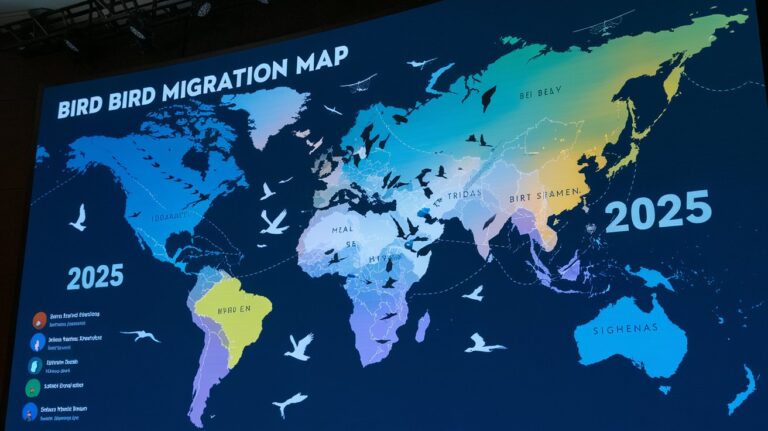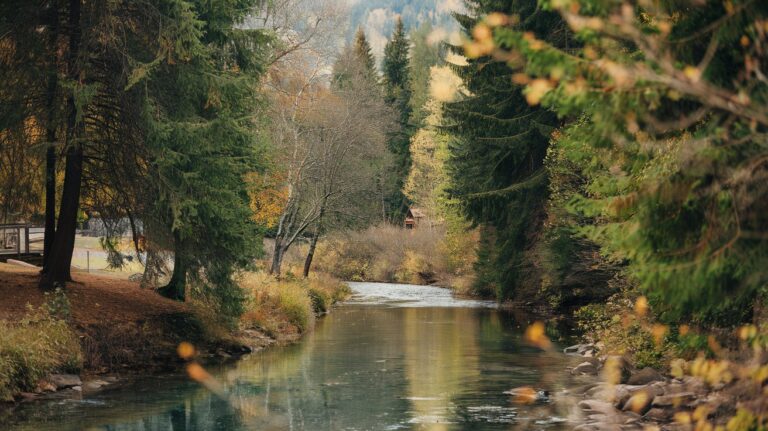What Is Wildlife Conservation? 2025 Complete US Guide
Wildlife conservation is the practice of protecting animal species and their habitats to prevent extinction and maintain biodiversity. In the United States, wildlife conservation combines scientific research, habitat preservation, and legal protection to ensure future generations can enjoy healthy ecosystems and diverse animal populations across our nation.
Understanding Wildlife Conservation Meaning and Definition
Wildlife conservation encompasses the systematic efforts to protect, preserve, and restore animal species and their natural environments. This comprehensive approach involves managing ecosystems, preventing habitat destruction, and implementing breeding programs for endangered species. The meaning of wildlife conservation extends beyond simply saving animals—it focuses on maintaining the delicate balance of nature that supports all life on Earth.
In the United States, wildlife conservationists work across federal, state, and local levels to implement strategies that address threats like climate change, urbanization, and pollution. These professionals combine scientific expertise with practical fieldwork to monitor animal populations, restore degraded habitats, and educate communities about the importance of biodiversity preservation for sustainable ecosystems.
The North American Model of Wildlife Conservation
The North American Model of Wildlife Conservation represents a unique approach that has guided wildlife conservation in America for over a century. This model establishes seven fundamental principles that ensure wildlife resources belong to all citizens, are managed scientifically, and remain accessible for future generations through sustainable hunting and fishing practices.
This distinctive conservation framework emphasizes that wildlife cannot be owned by individuals, hunting and fishing serve as primary funding mechanisms for conservation efforts, and all citizens have equal access to wildlife resources. The model has successfully restored numerous species from near extinction, including white-tailed deer, wild turkey, and wood duck populations across the United States.
Seven Pillars of North American Wildlife Management
The model’s seven pillars include public trust doctrine, prohibition on commerce of dead wildlife, democratic rule of law, hunting opportunity for all, non-frivolous use, international cooperation, and scientific management. These principles ensure that wildlife conservation decisions are based on biological science rather than political or economic pressures, creating sustainable populations that benefit both ecosystems and human communities.
Funding Conservation Through User-Pay Model
The North American system uniquely funds wildlife conservation through license sales, excise taxes on hunting and fishing equipment, and federal aid programs. This user-pay model generates over $1.6 billion annually for conservation efforts, demonstrating how conservationists have created a self-sustaining financial framework that directly supports habitat protection and species recovery programs.
Primary Goals of Wildlife Conservation Efforts
The fundamental goal of wildlife conservation involves preventing species extinction while maintaining healthy, functioning ecosystems that support biodiversity. Wildlife conservation efforts aim to stabilize declining populations, restore degraded habitats, and create corridors that allow animals to move safely between protected areas as climate conditions change.
Modern conservation strategies focus on ecosystem-based management that considers entire landscapes rather than individual species. This approach recognizes that protecting flagship species like grizzly bears or whooping cranes requires preserving the complex web of relationships that support their survival, including prey species, plant communities, and physical habitat features.
Species Recovery and Population Management
Wildlife conservationists implement targeted recovery plans for endangered species while managing abundant populations to prevent overgrazing or habitat damage. Recovery efforts include captive breeding programs, habitat restoration, genetic diversity maintenance, and reintroduction initiatives that have successfully restored species like California condors and gray wolves to their native ranges.
Habitat Protection and Restoration Initiatives
Protecting and restoring natural habitats represents the cornerstone of effective wildlife conservation. These efforts include establishing protected areas, removing invasive species, restoring native plant communities, and creating wildlife corridors that connect fragmented landscapes. Habitat work directly addresses the primary cause of species decline while providing benefits for entire ecological communities.
Types of Wildlife Conservation Strategies
Multiple types of wildlife conservation approaches work together to address different aspects of species and habitat protection. In-situ conservation protects species within their natural environments through national parks, wildlife refuges, and habitat management areas. Ex-situ conservation involves maintaining populations outside their natural habitats through zoos, aquariums, and breeding facilities that serve as genetic reservoirs.
Community-based conservation engages local populations as partners in protecting wildlife resources, recognizing that human communities must benefit from conservation efforts for long-term success. This approach has proven particularly effective in rural areas where agricultural practices can be modified to support wildlife populations while maintaining economic viability for farming families.
Protected Areas and Wildlife Refuges
The United States maintains over 560 National Wildlife Refuges covering 95 million acres, representing the world’s largest system of lands dedicated specifically to wildlife conservation. These refuges provide critical habitat for migratory birds, endangered species, and game animals while offering opportunities for wildlife-dependent recreation and environmental education programs.
Private Land Conservation Programs
Private landowners control approximately 70% of wildlife habitat in the United States, making voluntary conservation programs essential for species protection. Programs like the Conservation Reserve Program, Environmental Quality Incentives Program, and Partners for Wildlife provide financial incentives for farmers and ranchers to implement wildlife-friendly practices on their properties.
Big 5 Wildlife Conservation Organizations in America
The big 5 wildlife conservation organizations leading efforts across the United States include the National Wildlife Federation, World Wildlife Fund, The Nature Conservancy, Conservation International, and Wildlife Conservation Society. These organizations combine scientific research, policy advocacy, and on-ground conservation work to address the most pressing threats facing American wildlife populations.
Each organization brings unique strengths to wildlife conservation efforts. The National Wildlife Federation focuses on connecting Americans with nature and advocating for wildlife-friendly policies. The Nature Conservancy emphasizes science-based land and water conservation. The Wildlife Conservation Society operates major zoos while conducting field research and conservation programs worldwide.
Importance of Wildlife Conservation for Ecosystems
The importance of wildlife conservation extends far beyond protecting individual species—it maintains the ecological processes that support all life on Earth. Healthy wildlife populations control pest species, pollinate plants, disperse seeds, and cycle nutrients through ecosystems. These services provide billions of dollars in economic benefits while maintaining the natural systems that regulate climate, purify water, and produce oxygen.
Wildlife conservation also preserves genetic diversity that may prove crucial for developing medicines, improving crops, and adapting to environmental changes. Many pharmaceuticals derive from compounds originally found in wild plants and animals, while genetic resources from wild relatives help crop breeders develop varieties resistant to pests and diseases that threaten food security.
Modern Conservation Challenges and Solutions
Contemporary wildlife conservation faces unprecedented challenges including climate change, habitat fragmentation, invasive species, and emerging diseases. Climate change alters precipitation patterns, temperature ranges, and seasonal timing that many species depend on for breeding, migration, and food availability. Conservationists respond by identifying climate refugia, creating adaptive management plans, and assisting species migration to suitable habitats.
Technological innovations are revolutionizing conservation approaches through GPS tracking, genetic analysis, camera traps, and drone surveys that provide detailed information about wildlife populations and their needs. These tools enable more precise management decisions while reducing the cost and disturbance associated with traditional wildlife monitoring methods.
Climate Change Adaptation Strategies
Wildlife conservation programs increasingly focus on helping species adapt to changing climate conditions through assisted migration, habitat connectivity, and genetic management. These strategies recognize that static protection may no longer suffice as environmental conditions shift beyond historical ranges, requiring dynamic approaches that facilitate species movement and adaptation.
Technology Integration in Conservation
Advanced technologies enhance wildlife conservation effectiveness through real-time monitoring, predictive modeling, and automated data collection. Satellite imagery tracks habitat changes, genetic sequencing guides breeding programs, and artificial intelligence analyzes vast datasets to identify conservation priorities and predict species responses to management actions.
Future of Wildlife Conservation in America
The future of wildlife conservation in the United States depends on innovative approaches that integrate human communities with natural systems. Emerging strategies include nature-based solutions that address both conservation and human needs, urban wildlife management that accommodates species in developed areas, and international cooperation that protects migratory species across national boundaries.
Successful conservation will require increased funding, stronger partnerships between public and private sectors, and enhanced public education about the connections between human welfare and healthy ecosystems. Young Americans increasingly recognize that wildlife conservation represents an investment in their future, driving new approaches that combine traditional conservation methods with social media outreach and citizen science participation.
Related video about what is wildlife conservation
This video complements the article information with a practical visual demonstration.
Essential Q&A about what is wildlife conservation
What does a wildlife conservationist do?
A wildlife conservationist protects animal species and habitats through research, habitat management, breeding programs, and education. They monitor wildlife populations, implement recovery plans for endangered species, restore degraded ecosystems, and work with communities to reduce human-wildlife conflicts. These professionals combine fieldwork, data analysis, and policy advocacy to ensure long-term species survival.
What is the goal of wildlife conservation?
The primary goal of wildlife conservation is preventing species extinction while maintaining biodiversity and healthy ecosystems. Conservation efforts aim to stabilize declining populations, protect critical habitats, restore damaged environments, and create sustainable relationships between humans and wildlife. This includes preserving genetic diversity and ecological processes that support all life.
What is the big 5 wildlife conservation?
The big 5 wildlife conservation organizations in America are the National Wildlife Federation, World Wildlife Fund, The Nature Conservancy, Conservation International, and Wildlife Conservation Society. These organizations lead conservation efforts through scientific research, habitat protection, policy advocacy, and public education, collectively protecting millions of acres and countless species nationwide.
How is wildlife conservation funded in the United States?
Wildlife conservation in the United States is primarily funded through hunting and fishing license sales, excise taxes on outdoor equipment, and federal aid programs. This user-pay model generates over $1.6 billion annually for conservation efforts. Additional funding comes from private donations, grants, and government appropriations for specific conservation programs.
What are 10 points on conservation of wildlife?
Ten key points on wildlife conservation include: protecting natural habitats, preventing illegal hunting, controlling invasive species, restoring degraded ecosystems, maintaining genetic diversity, reducing pollution, creating wildlife corridors, supporting research and monitoring, engaging local communities, and implementing adaptive management strategies that respond to environmental changes and new scientific understanding.
Why is wildlife conservation important in America?
Wildlife conservation is crucial in America because it maintains ecosystem services worth billions of dollars, including pollination, pest control, water purification, and climate regulation. It preserves genetic resources for medicine and agriculture, supports outdoor recreation industries, and maintains the natural heritage that defines American landscapes and cultural identity for future generations.
| Conservation Aspect | Key Details | Benefits |
|---|---|---|
| Habitat Protection | 95 million acres in National Wildlife Refuges | Preserves critical ecosystems and endangered species |
| North American Model | Seven principles guiding conservation policy | Sustainable funding and democratic wildlife management |
| User-Pay Funding | $1.6 billion annually from licenses and taxes | Self-sustaining conservation financing system |
| Private Land Programs | 70% of wildlife habitat on private property | Voluntary conservation with economic incentives |
| Technology Integration | GPS tracking, genetic analysis, drone surveys | Improved monitoring and reduced disturbance |






